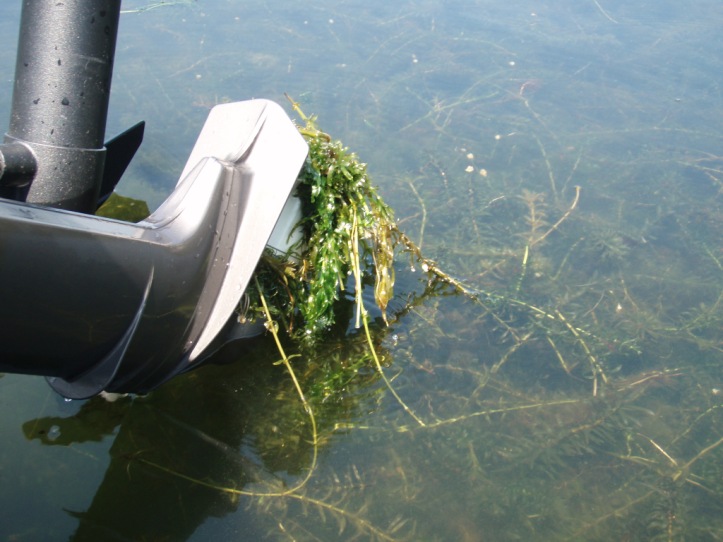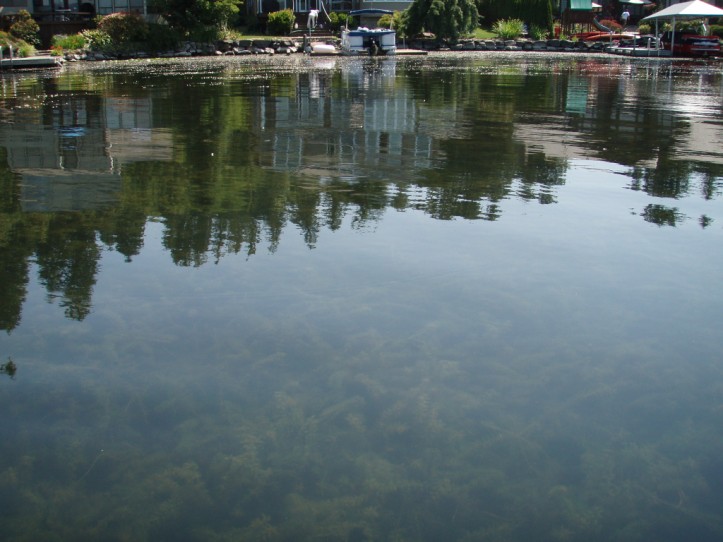If you live on a lake or creek and want to control weeds in the water or along the shoreline, it’s important to do some research first. Because of the risk of impacting water quality with any weed control method, there are safety guidelines and rules about what you can do and what you can’t do. Just about any activity that will disturb water quality or impact vegetation in or near water will most likely require a permit of some kind.

The good news is that for most simple non-chemical methods of clearing aquatic weeds, Washington simply requires that you obtain, read, and follow a free pamphlet from the Washington Department of Fish and Wildlife called Aquatic Plants and Fish. The WFDW aquatic plant removal website has information and a link to download the pamphlet, or you can contact your local WDFW regional office. Depending on where you live, your city may also require a permit or have additional restrictions, so make sure to contact your local city permitting office and ask about Shoreline Master Program and Critical Areas ordinances related to removing vegetation.
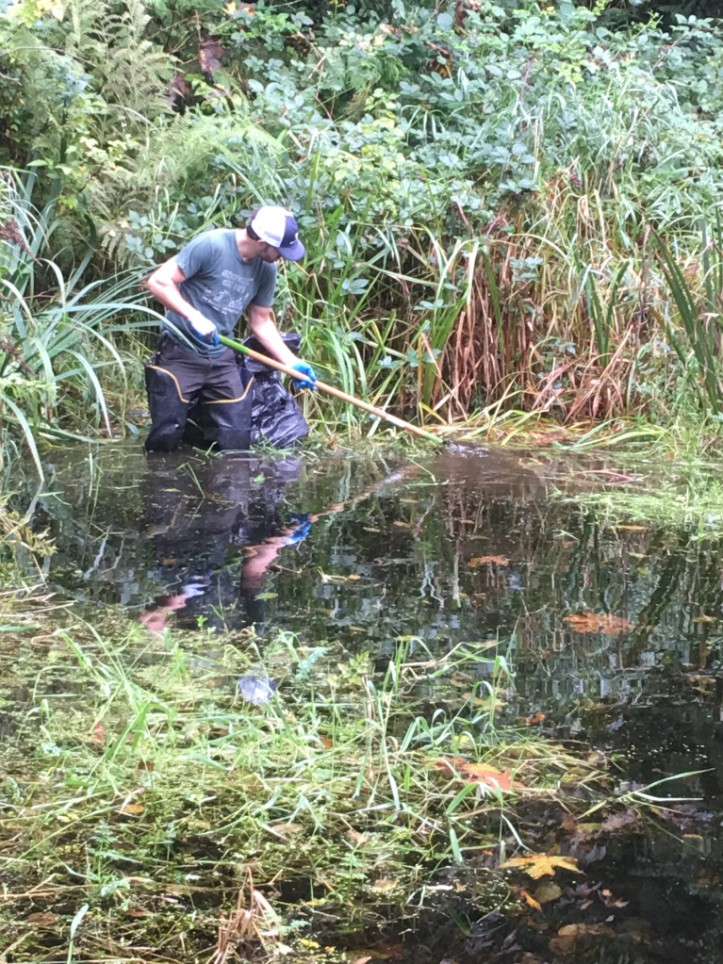
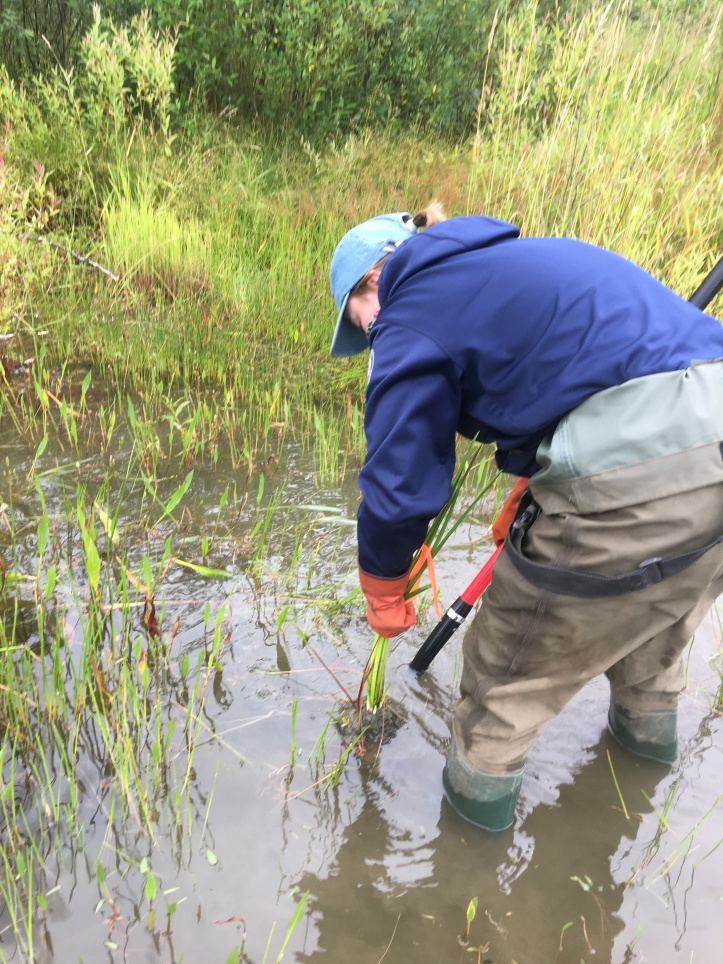
If there is any chance an herbicide will enter water or a wetland in Washington, it is very likely you will need to get a permit from the State Department of Ecology. The permit requirements vary based on whether there is a chance of herbicide drift into water (like when you are spraying along a shoreline) or if you are applying herbicides directly to water. To find out more and to apply for a permit, visit the Department of Ecology aquatic pesticide permits website.
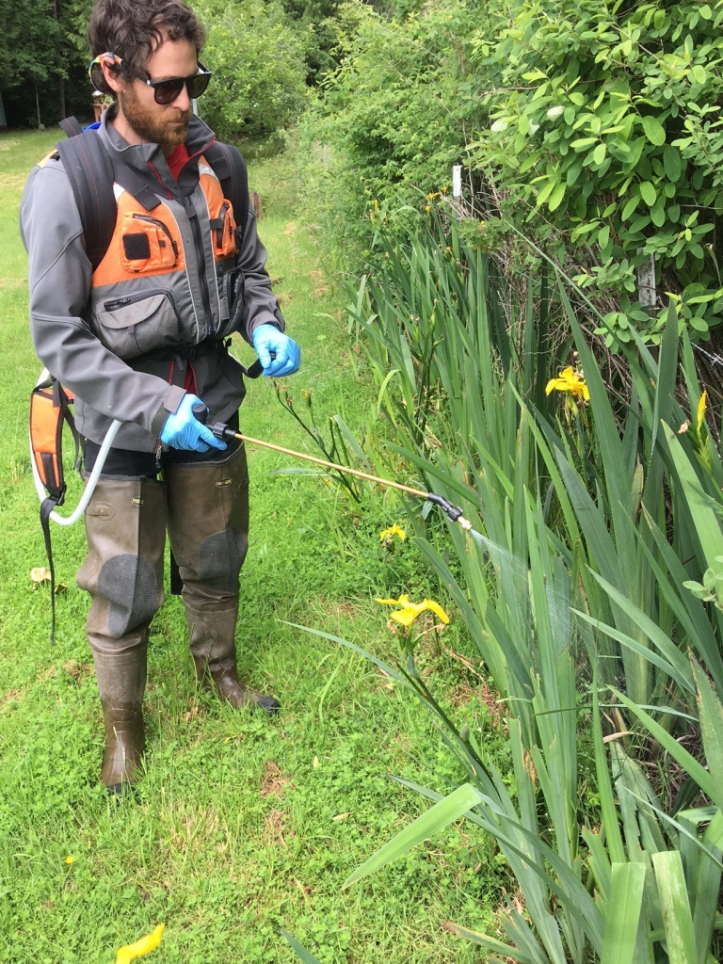
In addition to the Ecology permit, anyone applying an aquatic herbicide must have a pesticide license with an aquatic endorsement from the Washington State Department of Agriculture. For more information on licenses, see the WSDA pesticide licensing program website. If you would rather hire a professional, search for licensed aquatic applicators in your area, or if you are in the King County area, email us and ask for our weed control contractor list to get started.
And finally, if you just want to find out what weeds you have growing in the water, and how best to control them, refer to Ecology’s aquatic weed control technical assistance page and their Aquatic Plant Guide. It is important to differentiate noxious weeds from native plants. Native aquatic plants are highly beneficial for aquatic life and control regulations vary depending on what you are controlling.
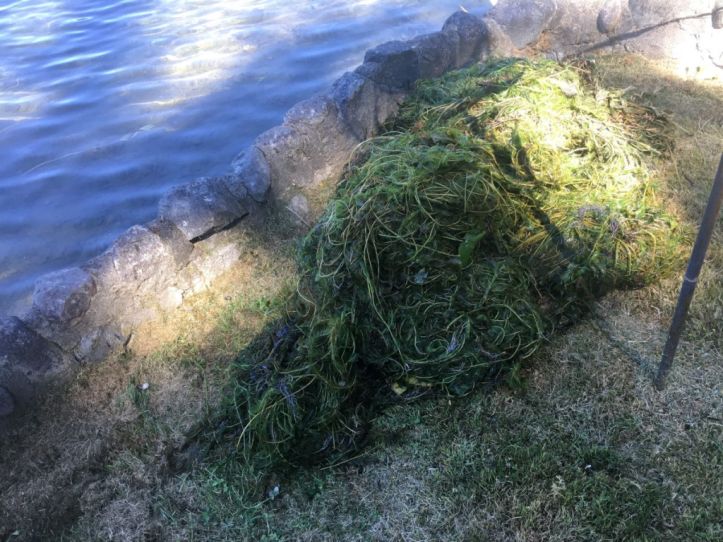
For photos and information on King County’s aquatic noxious weeds, download our Water Weeds Guide. For more information or help sorting all these issues out, please contact our aquatic noxious weed specialist Ben Peterson at ben.peterson@kingcounty.gov.
